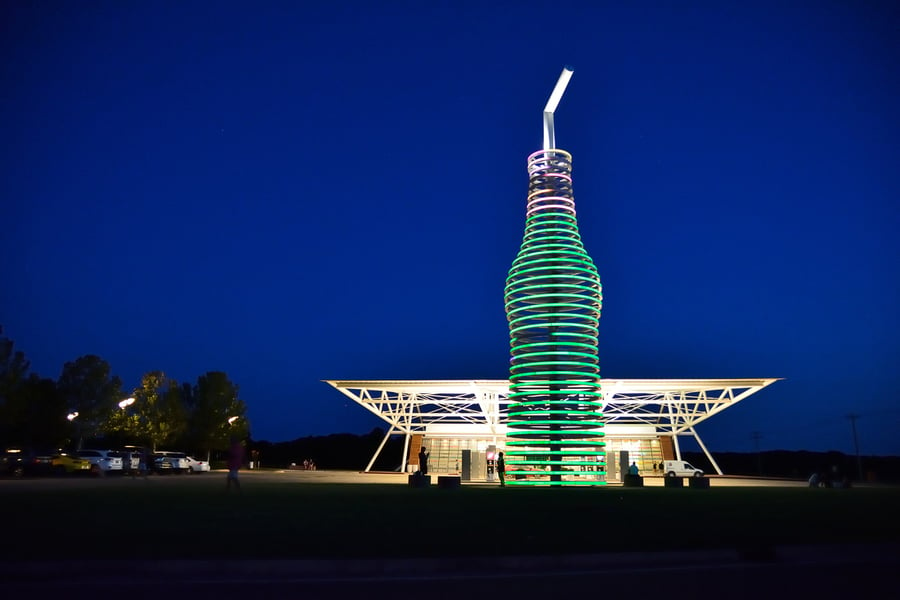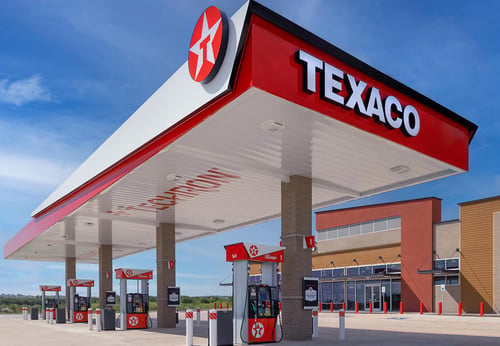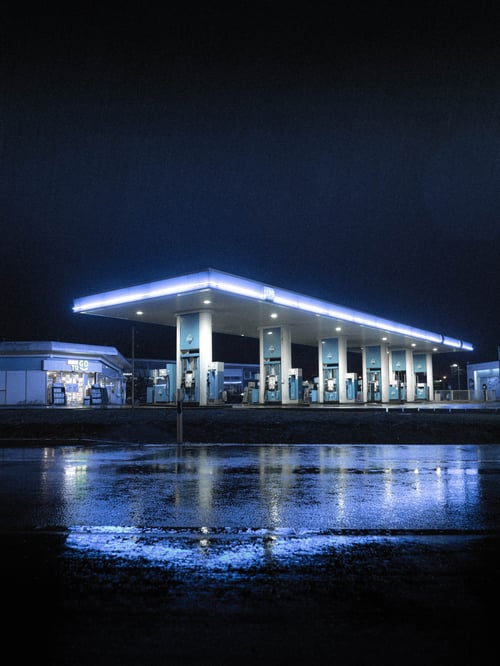
When it comes to gas station design you expect to see your favorite fueling station in Automotive Digest, not Architectural Digest.
Yet, gas stations are front and center in Architectural Digest’s “The 14 Best-Designed Gas Stations in the World” article published March 20, 2023.
“Finding a gas station isn’t too hard—in any city there’s usually at least one every few miles—but finding the best-designed gas stations can prove to be a bigger challenge,” wrote Katherine McLaughlin in the Architectural Digest story. “Generally crafted to move customers through as quickly and efficiently as possible, it’s not the type of architecture you think of when picturing beautiful structures. However, that doesn’t mean stunning ones don’t exist.”
Gas Station Design Evolving to Meet New Needs
Gas station design is a hot topic today as c-stores and other fuel operators look to retrofit or build new stations to meet the evolving needs of their customers.
Gas stations and c-stores are looking to incorporate everything from food and beverage drive-thru windows to indoor/outdoor dining and meeting spaces to electric vehicle charging stations into new designs.
“The gas station of the future will have treadmills, gardens, and solar panels – but no gas,” envisioned a Fast Company article last year. “The gas station as we know it is an endangered species. As electric vehicles gradually make up a larger share of cars on the road, entirely new kinds of service stations will be needed to fuel their journeys.”
Electronic Autonomy Canada just named the winner of the “The Electric Fueling Station of the Future: A Design Competition.”
Architect James Silvester of Edinburgh, Scotland, won the first prize which included:
- Cantilevered-designed rooftop solar to help power commercial facilities.
- Modular design allows the station to adapt flexibility to different sites: a rural location may have a café and washrooms, while a commuter hub could become a larger facility with everything from an arcade to shops.
- Timber-framed canopy provides shelter to vehicles and visitors in inclement weather.
- Station footprint is designed around the dimensions of the parking spaces, minimizing material usage.
- Courtyards punctuate the pavilion, creating lounge areas for rest and relaxation.
- For those wanting to work out while their car charges, a gym can be added to the services offered in larger hubs.
- Spaces can also be configured to house a games room for a welcome break for road trippers.
- At night, LED lighting illuminates the rook and showcases the timber structure.
- Digital signage directs arriving passengers to available charging bays for a more seamless experience that increases safety by minimizing circulation.
“It's as if Steve Jobs had asked them to design something. As people, we are moved by beauty. It would represent such a radical change from gas stations as we know them,” commented jury member and architect, Bruce Kuwabara, KPMB.
Hit the Road Jack: 9 Gas Station Architectural Gems
It might take a while for Silvester’s award-winning station design to become a reality, and despite the rising popularity of EV’s, most of us are still hunting for a traditional gas station or c-store to fill up our tanks.
The good news is that 9 of the gas stations featured in the Architectural Digest story are operating today. From Arcadia, Oklahoma to Beverly Hills in the U.S. and from Spain to Slovakia in Europe, here are the best-designed gas stations in the world you can visit:
- Pops on Route 66: Get your kicks on Route 66 and some gas and some pop at this iconic gas station in Arcadia, Oklahoma. The family-friendly, full-service gas station and c-store features a 66-foot-tall pop bottle (which dazzles at night with multicolor LED lights) outside and tons of bottled soda inside (600 soda flavors!).
Pops has a restaurant that serves 10:30 a.m. to 9 p.m. each day and offers breakfast on the weekends between 7 and 10:30 a.m. Offerings include everything from battered pickle fries to grilled chicken Caesar salad. - Frank Lloyd Wright-Designed Gas Station: One of America’s most prized architects, Frank Lloyd Wright, did indeed build a gas station in 1958 in Cloquet, Minnesota, and it is still operating today. You can not miss it if you go through town as the station has “FL Wright” on the spire-like roof topper, and the station’s large digital price sign Wright’s name and likeness above it.
Wright conceived the station as part of his decentralized utopian community. The station with a cantilevered copper roof is said to have cost 4x the average price of a two-pump gas station when built with a $20,000 price tag. Wright did not oversee the construction of the gas station because he was busy supervising the building of the Guggenheim Museum in New York. - Mid-Century Modernism in Beverly Hills: Beverly Hills conjures up images of Gucci and not gas, but this Union 76 station on the corner of Crescent Drive and Little Santa Monica Boulevard is called by the Los Angeles Conservancy “a true icon of Mid-Century Modernism.”
This example of Googie architecture was designed by Gin Wong in the 1960s and was originally slated for Los Angeles International Airport, but did not work out in LAX’s plans so was repurposed as this gas station. Features include a single huge swooping, curved canopy that would be at home in a sci-fi movie. - Upcycling in Los Angeles: A traditional gas station was built in the 1970s at the major Los Angeles intersection of Robertson and Olympic Boulevard, but in 2013 a retrofit turned the gas station into “Helios House” by “upcycling” old materials such as stainless steel. Helios House's unique design features 90 solar panels and water, heat, energy, lighting, and material systems are all built to maximize sustainability and energy efficiency.
Architype Review says that “Energy-efficient lights illuminate the station, which in concert with the canopy design reflect colored light on the faceted stainless steel cladding, allowing the station to draw 16 percent less electricity than conventional stations. Sensors further optimize the use of artificial light through a 24-hour cycle.” - Modular Canopy System in Spain: Foster + Partners in the late 1990s did not just envision a single gas station but an entirely new service station system for the Spanish oil company Repsol. The result was a modular canopy system in the Repsol signature red, white, and orange colors that can be seen across some 200 stations around Madrid and across the country. Clusters of these canopies form a series of overlapping ‘umbrellas’ that shelter the station forecourt.
The canopy head is an inverted pyramid, its crisp edges balanced by the less emphatic lines of the cladding. The umbrellas vary in number, height, and in degree of overlap between them, according to the specifics of each site. The canopies themselves are arranged in a predetermined sequence which ensures that a red one is always the tallest. This brightly colored combination creates a strong three-dimensional image and clearly breaks the mold of the established service station forecourt. - Fluid Movement Outside of Madrid: Spain is also home to another celebrated gas station design, the Moneo Brock inspiration found on the A1 highway just outside of Madrid. This architecture project consists of three curvilinear canopy structures and a rectilinear building that houses, in addition to the service station’s facilities, a full-service restaurant.
Drawing on inspiration from the cantilevered designs of the 1940s and 1950s with an updated playful and contemporary character with curved shapes of the canopies that provide not only shelter but also fluid movement blending in with the rolling hills' natural landscape. From a distance, this gas station can appear as clouds or birds in flight on the horizon. - Curved Concrete Canopy in Slovakia: The Prague firm Atelier SAD designed this gas station in Galanta in 2011 to feature three curvy canopies made from reinforced concrete and supported by three funnel-shaped columns. Overhead lighting – built into the surface where columns meet discs and line their undulating edges. The stunning canopy transitions to a minimalist kiosk lined with wood.
- You Scream, We Scream, We All Scream for Ice Cream … and Petrol!: Oliver’s Garage is an ice cream and coffee shop located in a 1930s petrol station designed by the great Danish architect Anne Jacobsen. You can still get gas (and truffle cheeseburgers at the grill!) at the station located in the former fishing village of Skovshoved on the Oresund coast north of Copenhagen. Built in 1936 for Texaco, the station was restored in 2002 and features an oval canopy known as “The Mushroom”.
- Pegasus Design Takes Flight in England: The Red Hill filling station in the United Kingdom is an example of the futuristic “Pegasus” design created by Eliot Noyes for Mobil Oil in the 1960s. This Leicestershire station features six oversized circular canopies, illuminated from below and supported by central tapered central pylons. The original Mobil red Pegasus logo no longer flies as this location at last check was operated by BP.






